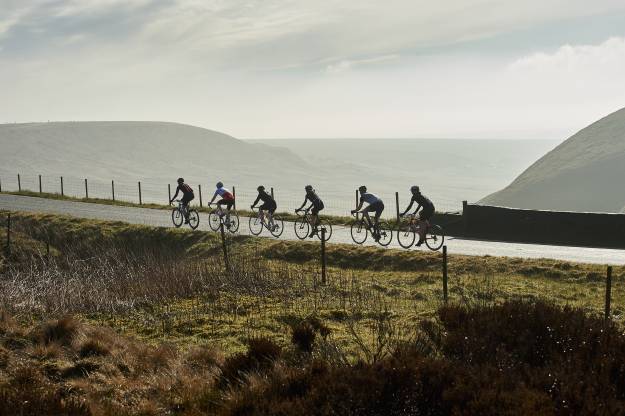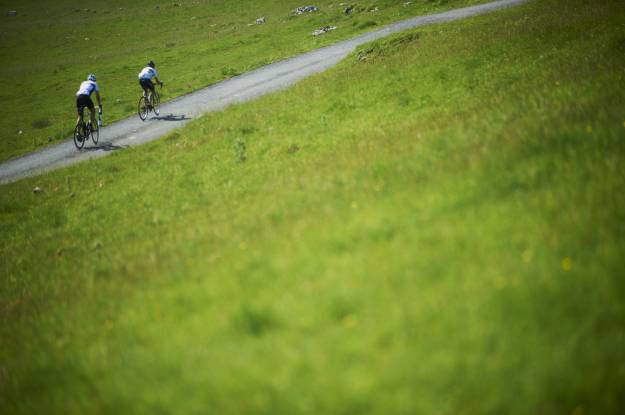Daily Commuting Tip | Chains
Posted: 22nd October 2009 | Eddie Allen
More: Daily Commuting Tips Archive
 The chain is one of the hardest working, put-upon components on any bicycle, and the chain of your commuter bike gets the worst deal of all. It suffers a life of stop-start riding, as you move from traffic light to traffic light. It's exposed to the elements, locked up outside all day. And it probably gets the minimal amount of maintenance to keep it from squeaking or turning orange with rust. Yet it's one of those components that deserves a bit of TLC. It's the delicate but vital connection between your physical effort and forward locomotion, and a snapped chain is a pain to deal with when you're already late for work. Trust me. Ask me how I know.
The chain is one of the hardest working, put-upon components on any bicycle, and the chain of your commuter bike gets the worst deal of all. It suffers a life of stop-start riding, as you move from traffic light to traffic light. It's exposed to the elements, locked up outside all day. And it probably gets the minimal amount of maintenance to keep it from squeaking or turning orange with rust. Yet it's one of those components that deserves a bit of TLC. It's the delicate but vital connection between your physical effort and forward locomotion, and a snapped chain is a pain to deal with when you're already late for work. Trust me. Ask me how I know.
Respect and lubrication
Oiling is a simple and not too onerous task that should be done regularly. How regularly? Well, that depends on how often you use the bike, in what conditions and what chain lube you use. So the answer is to apply some common sense. Why do you oil your chain in the first place? The answer is to keep it flexible, prevent corrosion and guard against premature wear.
A good test is to use your ears. If a chain starts to sound dry and squeaky, you know it's overdue some lube. Similarly if there are rust spots on your chain, it's a sign that it's not adequately protected from the elements. Generally speaking, heavier lubes last much longer and require less frequent reapplications, whereas light lubes, or ‘dry' lubes need reapplying every other day. However, the trade-off is that heavier lubes tend to pick up more dirt than light ones...
I've found that with an everyday commuter bike, where reliability and longevity are more important than the utmost efficiency and a shiny drivetrain, using a fairly standard 3 in 1 type oil works well and lasts ages between applications.
WD40 is not oil
A mistake I made early in my cycling career. I treated my MTB chain exclusively with WD40 and it lasted less than 3 months of regular riding, requiring a new chain, cassette and chainrings. An expensive mistake. WD40 is a water dispersant/repellent, so it's great for applying to moving parts straight after washing your bike, but make sure that for your chain you follow it up with something with better lubricating properties.
How to oil
No matter what lube you use, the key is to not over-lube your chain. Starting with a clean chain, drip a drop of oil onto each roller until all the rollers have been dripped, then wipe off the excess thoroughly with a rag. Go for a quick spin and wipe off again. This is essential to stop the chain pickup up road dirt, which can combine with oil inside the chain, creating a paste which causes rapidly accelerated wear.
Alternatives to oil
Many riders use chain waxes to lube their chains. These are applied wet and then dry out to form a protective layer on the inside and outside of the chain. Some swear by paraffin wax, removing their chains, degreasing them thoroughly and placing them in molten wax. When dry, you get a well-lubed chain that doesn't pick up dirt and therefore lasts way longer.
Keep an eye on chain stretch
With usage chains, in effect, stretch. What actually happens is the pins and rollers inside the chain wear and allow the chain to elongate. If your chain gets too stretched it starts to wear your rear cassette and front chainrings resulting in poor meshing. The only cure is a complete drivetrain swap, which is expensive even on a fairly cheap bike (often more than the bike is worth!). Chain stretch can be checked with a chain checker tool, which all good bike shops will have.
For these reasons many riders run two chains and swap them regularly, minimising the impact of the rest of the drivetrain. This makes economic sense, as the chain is by far the cheapest part of the drivetrain. In most cases however, it's often saves a lot of headaches to replace the chain and cassette at the same time, otherwise you'll get gear meshing problems.
Commuter specific chains
If you shop around you can find zinc plated chains which resist corrosion even in really harsh conditions. The zinc plating is essentially the same as the galvanised treatment you see on lorry chassis, bridges, ships, roofing nails, etc and makes for a long lasting chain that can handle abuse.
My Granddad's old 3 speed chain has never been replaced. Why's that?
Hmmmm, good question. For starters, the whole drivetrain was made of steel so there's no problem with hard steel chains eating away at soft aluminium chainrings. Also, the chains, sprockets and chainrings on old three speeds were much sturdier in build, with a wider, higher sprocket teeth and a chain to match. Because the drivetrain used a 3 speed internal hub, the chain was always running at the same, optimal angle, unlike a derailleur equipped bike, whose chain is contorted into all sorts of angles, vastly accelerating wear. Another reason why hub gears for a commuter bike are a good idea.








